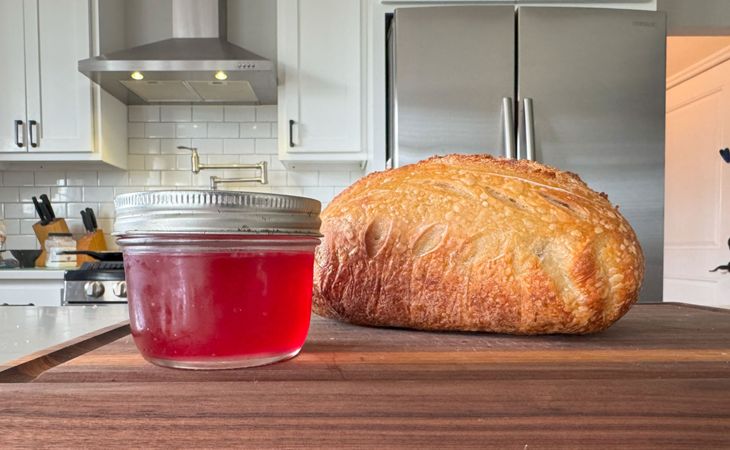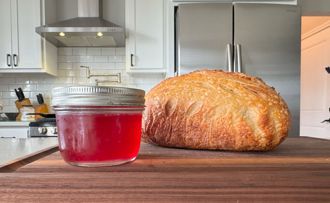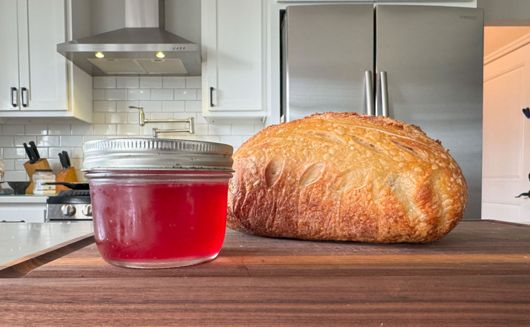Pest & Disease Control for Rhubarb Plants
Every plant has the future potential for disease and insect damage. Factors such as location and weather will play a part in which issues your plants encounters. If available, disease-resistant varieties are the best option for easy care; and for all types of plants, proper maintenance (such as watering, pruning, spraying, weeding, and cleanup) can help keep most insects and diseases at bay.
NOTE: This is part 7 in a series of 11 articles. For a complete background on how to grow rhubarb plants, we recommend starting from the beginning.
Leaf Spot
These fungi cause circular, or angular spots, variable in size having beige centers surrounded by a red zone. When affected tissue dies, it may drop out, leaving large ragged holes in the foliage. Fungi overwinter in infected plant debris and in infected propagation stock.
Natural Control
- Remove and destroy leaves following the first heavy frost.
- During harvest, remove stems with spotted leaves first.
Other Control Options
- Consult County Extension Agent
Botrytis Rot
May cause a leaf, stem and crown rot of forced rhubarb. Disease intensifies where there is poor air circulation and high humidity.
Natural Control
- Practice strict sanitation.
Other Control Options
- Consult County Extension Agent
Root and Crown Rot
Plants become unthrifty. Leaves may turn yellow to red and collapse. The crowns, when sectioned, exhibit a brown-black decay. Large roots lack small feeder roots. Larger roots may have large brown-black lesions present.
Natural Control
- Purchase healthy propagation stock.
- Select well-drained fields.
- Remove and destroy diseased plants.
Other Control Options
- Consult County Extension Agent
Virus
Several viruses are known to occur in rhubarb. Reports from British Columbia and UK indicate that turnip mosaic; arabis mosaic and cherry leaf roll virus is the most common. These viruses have wide host ranges and cause mottling and ring spotting of leaves. They may be introduced in infected planting stock.
Natural Control
- Obtain and plant healthy nursery stock.
- Avoid planting virus free crowns near virus-contaminated crowns.
Other Control Options
- Consult County Extension Agent
Potato Stem Borer
The potato stem borer is a caterpillar, which when fully grown is about 3.5 cm in length and pinkish-white in color. The first stages of the insect attack only weeds, couch grasses in particular. Later they move into the centre of the stalk. The adult moths lay their eggs on the stems of grasses in August. The eggs do not hatch until the following spring. Damage can be expected in June and July. Serious infestation can lead to an unmarketable crop.
Natural Control
- This pest is not a problem when couch grass and other weeds are controlled in and around the rhubarb plant.
- Weeds should be controlled to make the area less attractive for egg lying by the adult moth.
- Early spring burning of affected fields or field margins will effectively control this pest.
Other Control Options
- Consult County Extension Agent
Tarnished Plant Bug
Adult tarnished plant bugs are light brown to reddish brown in color and about 5-6 mm in length. They occur throughout the season. They are very active and quick moving. They can damage rhubarb by feeding on young leaves. Tarnished plant bugs are mainly a pest of new plantings.
Natural Control
- Keep plantings and adjacent areas weed free.
- Avoid planting adjacent to legumes.
Other Control Options
- Consult County Extension Agent
Slugs
Slugs may be a problem in plantings with heavy soils, poor drainage and in weedy situations. Slugs feed at night, by rasping the surface of stems, leaving unsightly scars, which reduce the salability of the stem. Keep weeds under control.
Natural Control
- Remove leaves and trash from the field when harvesting.
- DO NOT use manure and/or mulches in areas of field prone to slug damage.
Other Control Options
- Consult County Extension Agent
Black Bean Aphid
Black bean aphid aphis fabae has caused problems on occasion. Large infestations may cause curling or wilting of leaves. There is also potential for the spread of virus by aphids. Provide good weed control.
Chemical Control
- GardenTech® Sevin® Concentrate Bug Killer
Flea Beetle
Flea beetle can cause damage to new plantings by their feeding activity on the leaves. They are especially active during periods of hot dry weather. Provide good weed control.
Chemical Control
- GardenTech® Sevin® Concentrate Bug Killer
Cutworms
Larvae appear as smooth skinned caterpillars to the naked eye. Frequently roll into a C-shape when disturbed. Variegated is yellow to brown, little over an inch long with 4-6 yellow or pink diamond-shaped spots down its back. Dark sided cutworm somewhat larger, gray to greenish gray with irregular longitudinal stripes. Larvae feed at night.
Natural Control
- Hi-Yield® Vegetable & Ornamental Insect Control












